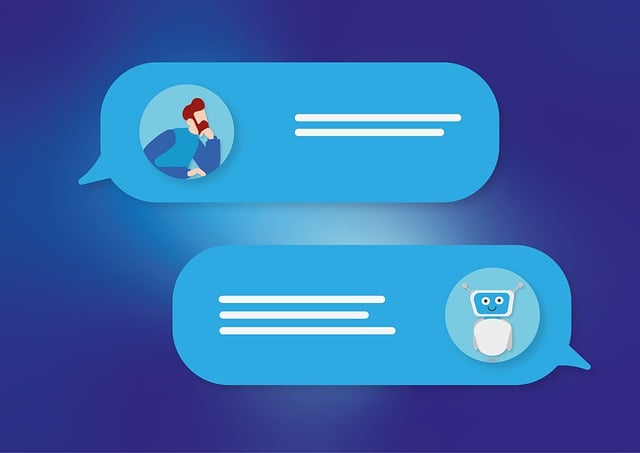Implementing AI chatbots and assistants in customer service faces challenges like limited budgets, technical expertise shortages, and data privacy concerns. Overcoming these obstacles requires strategic planning, robust data security measures, and identifying key optimization areas. Businesses can enhance AI chatbot capabilities by streamlining communication protocols, standardizing FAQs, and leveraging existing data sources. Pre-trained language models and transfer learning techniques offer efficient solutions for tailored AI chatbots with reduced computational costs. Cloud-based solutions provide scalable, cost-effective infrastructure for managing resource constraints. Continuous improvement, diverse dataset updates, and strategic resource allocation ensure peak performance in AI customer service.
“In an era driven by AI advancements, the adoption of AI chatbots and assistants is rising, yet organizations often face resource constraints. This article guides you through overcoming these challenges, ensuring seamless integration of AI customer service solutions. We explore strategies such as understanding and optimizing resource allocation, leveraging pre-trained models, cloud-based scalability, and continuous improvement techniques. Discover how these approaches can enhance AI chatbot implementation, providing efficient, cost-effective, and robust AI customer service.”
- Understanding Resource Constraints in AI Chatbot Implementation
- Identifying Key Areas for Optimization: A Cost-Effective Approach
- Leveraging Pre-trained Models and Transfer Learning Techniques
- Exploring Cloud-Based Solutions for Scalability and Cost Savings
- Strategies for Continuous Improvement and Efficient Resource Allocation
Understanding Resource Constraints in AI Chatbot Implementation

Implementing AI chatbots and assistants, especially in customer service roles, has become increasingly appealing due to their potential to revolutionize interactions with consumers. However, organizations often face resource constraints when considering such a transition. These can include limited financial budgets, a shortage of technical expertise, or concerns about data privacy and security. Understanding these constraints is the first step towards overcoming them.
For instance, while AI chatbots offer cost-effective solutions, initial setup costs and ongoing maintenance requirements may strain resources. Addressing this through strategic planning, such as phasing in implementation or leveraging existing infrastructure, can help mitigate financial barriers. Similarly, ensuring data security measures are robust is essential for gaining stakeholder buy-in, especially when dealing with sensitive customer information.
Identifying Key Areas for Optimization: A Cost-Effective Approach

Identifying key areas for optimization is a strategic step in making AI chatbots and assistants more accessible, especially for businesses looking to implement AI customer service solutions on a budget. By focusing on specific aspects of development and deployment, organizations can enhance their AI chatbot’s capabilities without incurring significant costs. This cost-effective approach involves evaluating existing workflows and processes within the customer service domain.
For instance, streamlining communication protocols and standardizing frequently asked questions (FAQs) can significantly improve an AI chatbot’s performance. Simplifying these elements reduces the complexity of training data preparation, enabling more efficient knowledge transfer to the AI model. Additionally, leveraging existing data sources and integrating them into the chatbot’s database can enhance its ability to provide accurate and contextually relevant responses, thus optimizing resource allocation and maximizing the value of AI customer service investments.
Leveraging Pre-trained Models and Transfer Learning Techniques

Leveraging pre-trained models and transfer learning techniques is a powerful strategy to overcome resource constraints when implementing AI chatbots and assistants for customer service. Pre-trained language models, such as those developed by leading tech companies, have been trained on vast amounts of text data, enabling them to understand and generate human-like responses. By fine-tuning these pre-trained models with specific domain knowledge or industry-related data, organizations can create highly capable AI chatbots tailored to their unique needs without requiring extensive resource-intensive training from scratch.
Transfer learning further enhances this process by allowing the knowledge gained from one task to be applied to another related task. This means that even with limited resources, the model can adapt and improve its performance in customer service scenarios, ensuring efficient and effective interactions while reducing the computational costs associated with traditional training methods.
Exploring Cloud-Based Solutions for Scalability and Cost Savings

In today’s digital era, businesses are increasingly turning to AI chatbots and assistants as a means of enhancing customer service while optimizing resource allocation. However, one of the primary challenges in adopting AI-powered solutions is managing resource constraints, particularly concerning computational power and budget. Here, cloud-based solutions emerge as a powerful strategy to surmount these hurdles.
By leveraging cloud infrastructure, organizations can enjoy unparalleled scalability and cost savings. Cloud platforms offer virtually unlimited computing resources that can be swiftly scaled up or down depending on demand. This elasticity allows businesses to handle varying loads without investing in substantial on-site hardware. Moreover, cloud providers typically employ advanced optimization techniques and efficient resource management, ensuring that AI chatbots operate at peak performance while minimizing operational costs.
Strategies for Continuous Improvement and Efficient Resource Allocation

To overcome resource constraints in adopting AI chatbots for customer service, organizations can implement strategies that focus on continuous improvement and efficient resource allocation. Regularly updating and refining the AI models with diverse datasets helps enhance their accuracy and adaptability to various customer inquiries. This process involves monitoring performance metrics, identifying areas of improvement, and incorporating feedback from both users and human agents. By doing so, AI chatbots become more sophisticated in understanding nuances, contextual information, and handling complex queries, thereby increasing their effectiveness and efficiency.
Efficient resource allocation is equally crucial. This includes optimizing the distribution of computational power, data storage, and human oversight. Utilizing cloud-based infrastructure allows for scalability, enabling businesses to adjust resources according to demand without significant upfront investments. Furthermore, strategic pairing of AI assistants with human customer service representatives can ensure that simple tasks are automated while more complex or unique issues receive personalized attention, fostering a seamless blend of technology and human interaction in delivering exceptional ai customer service.
